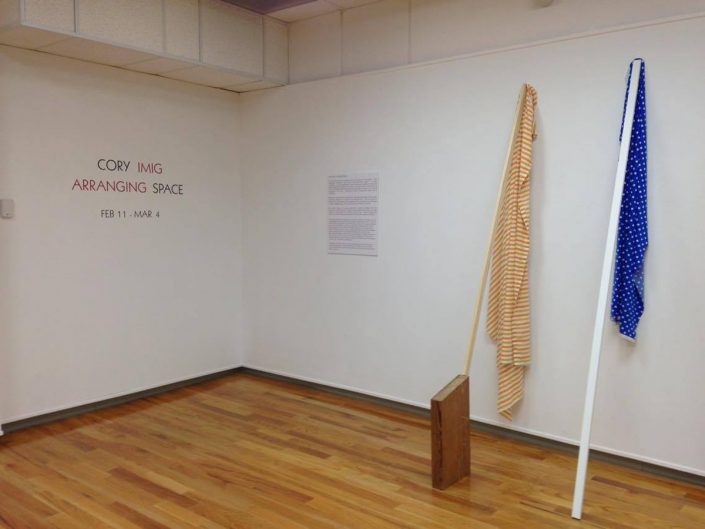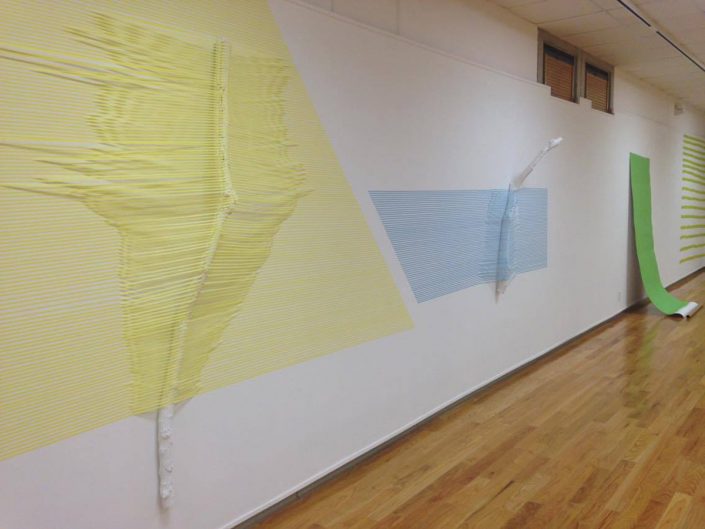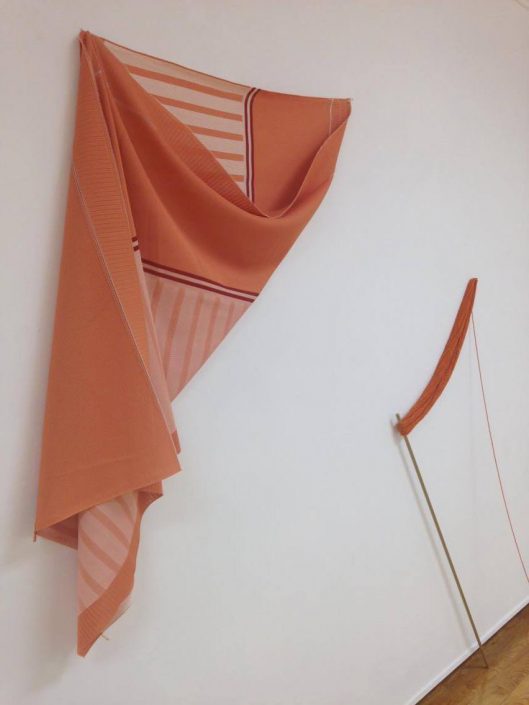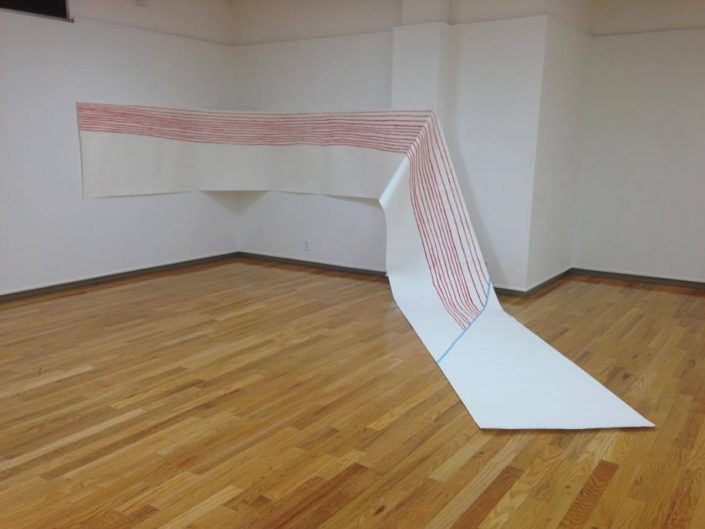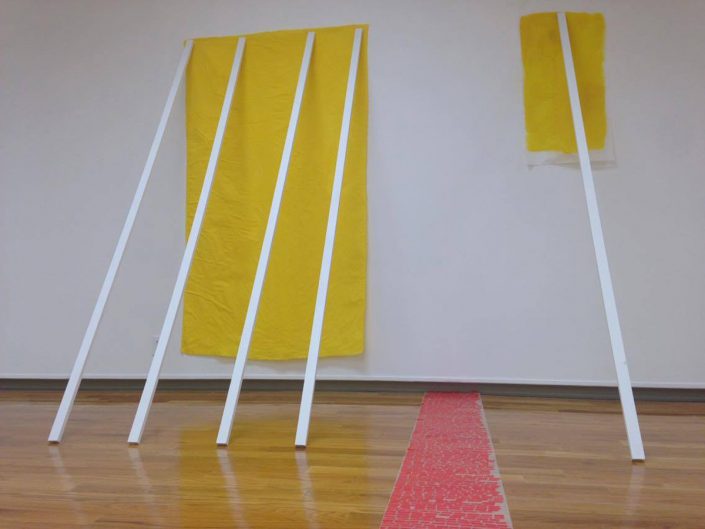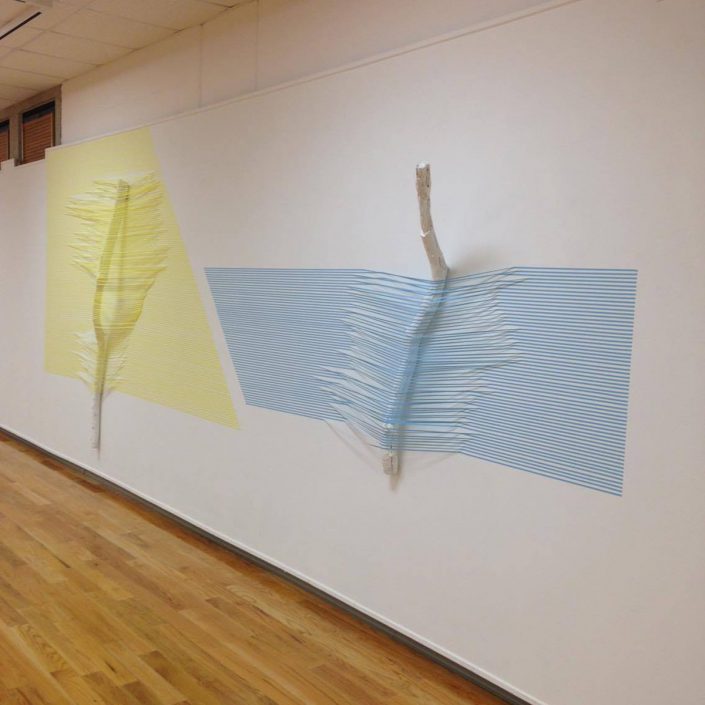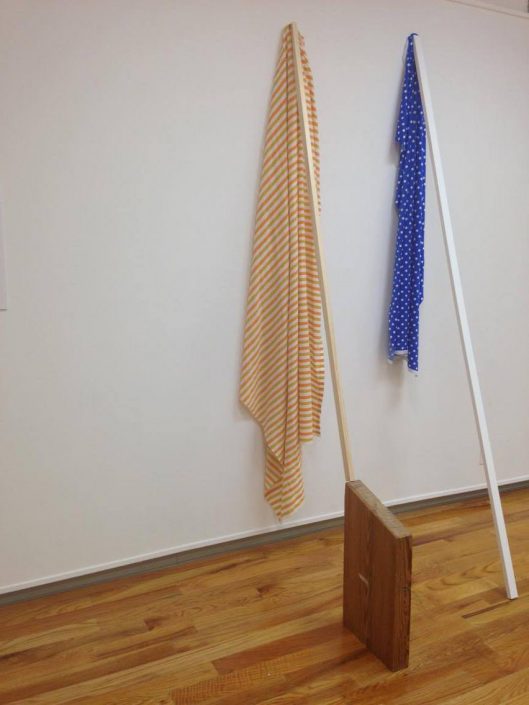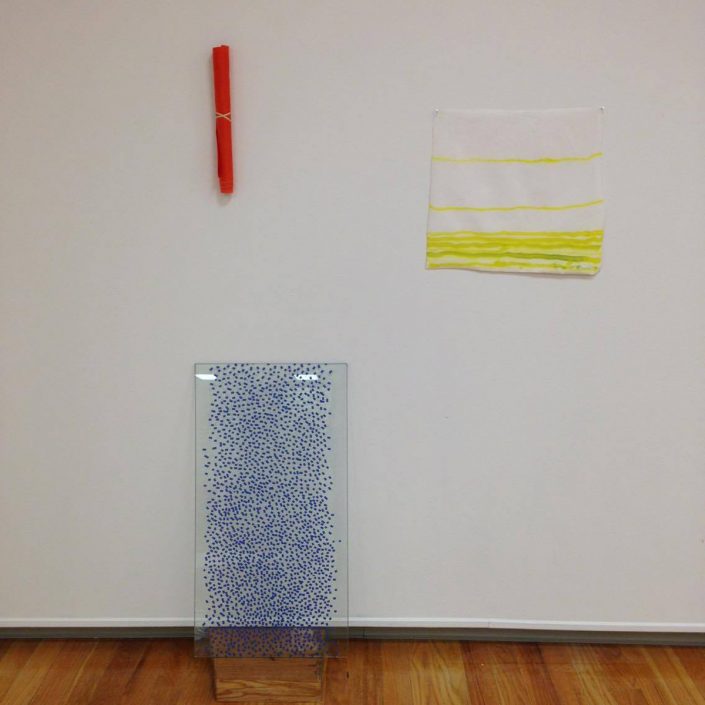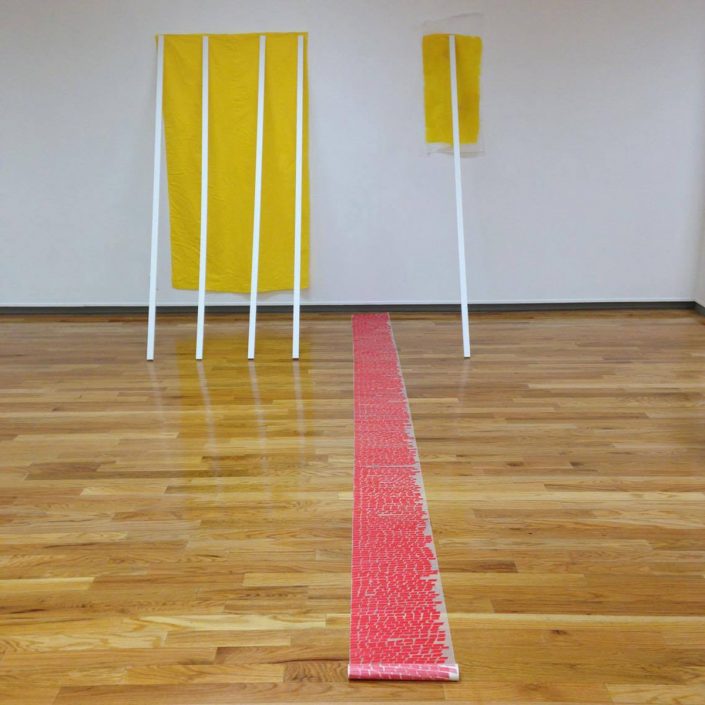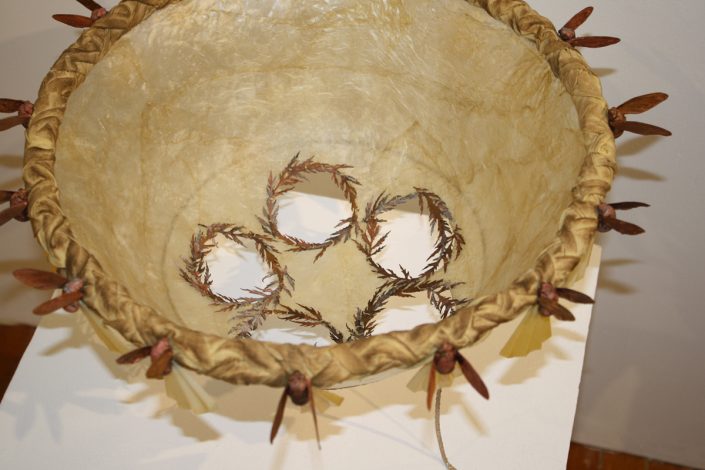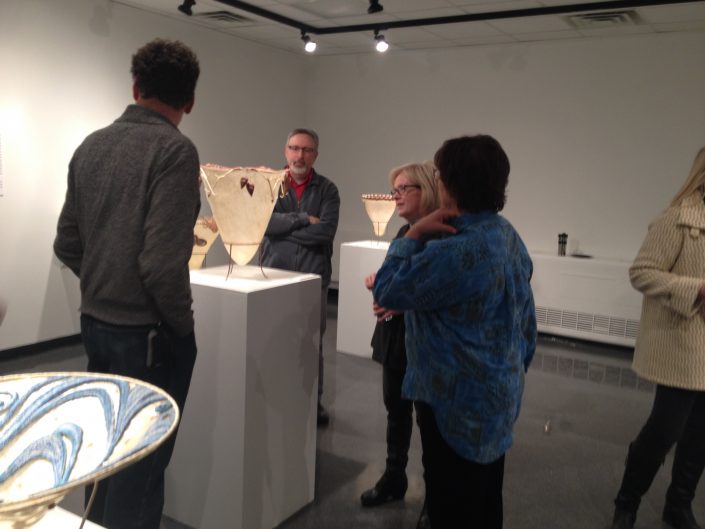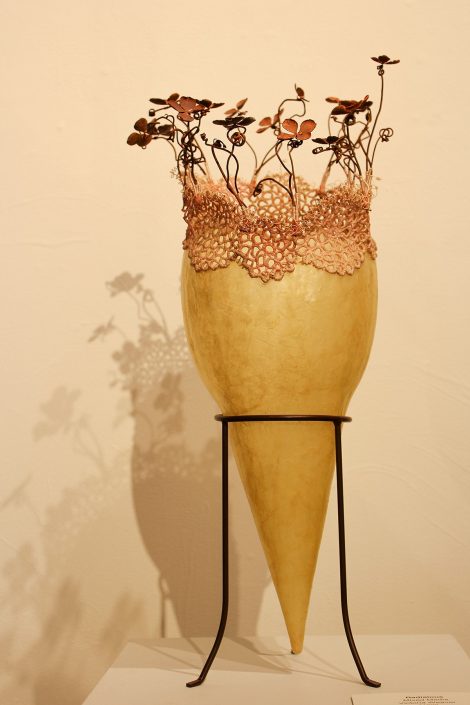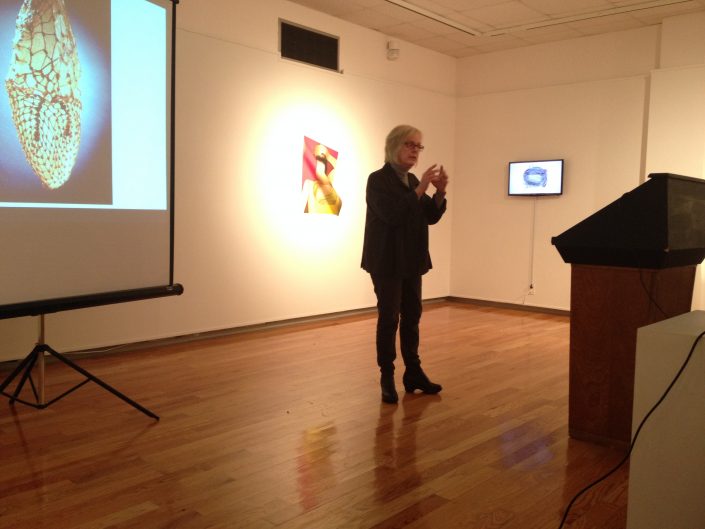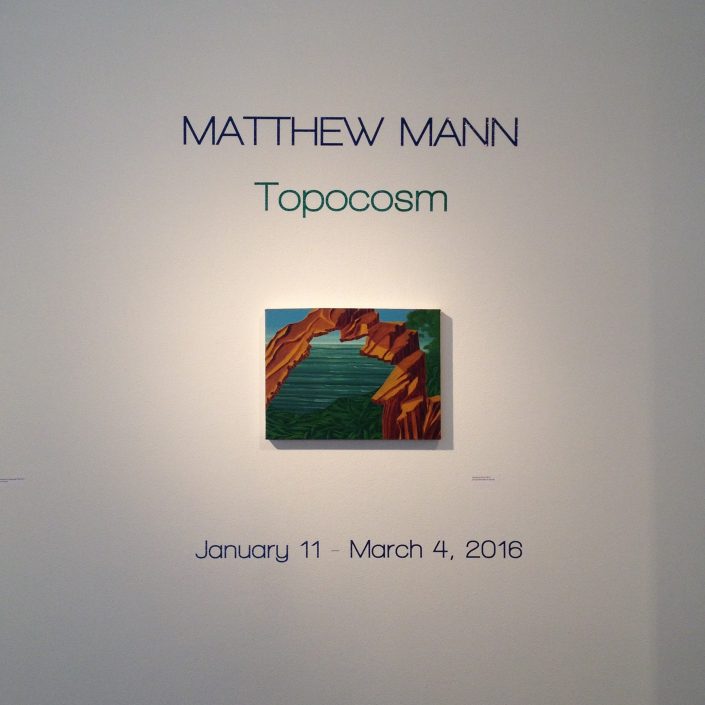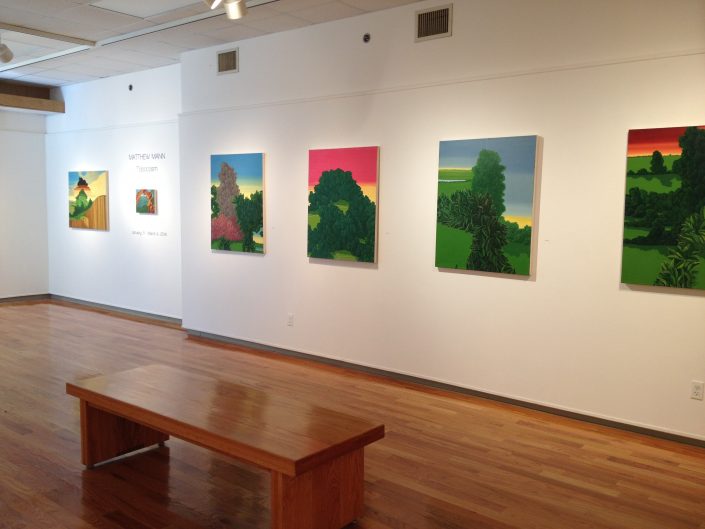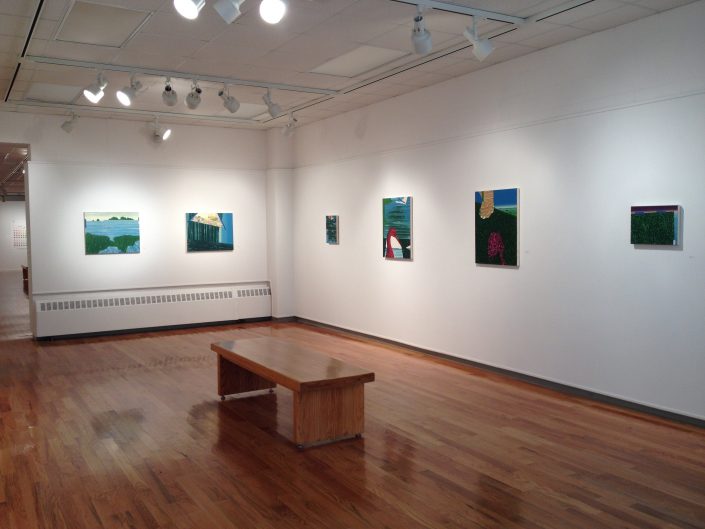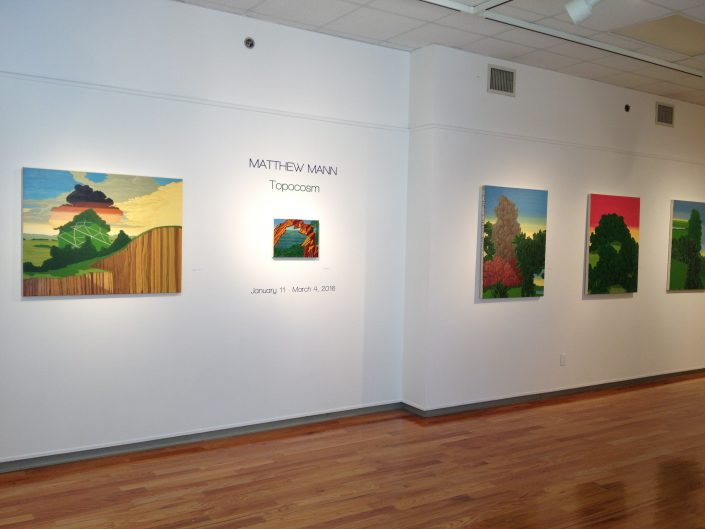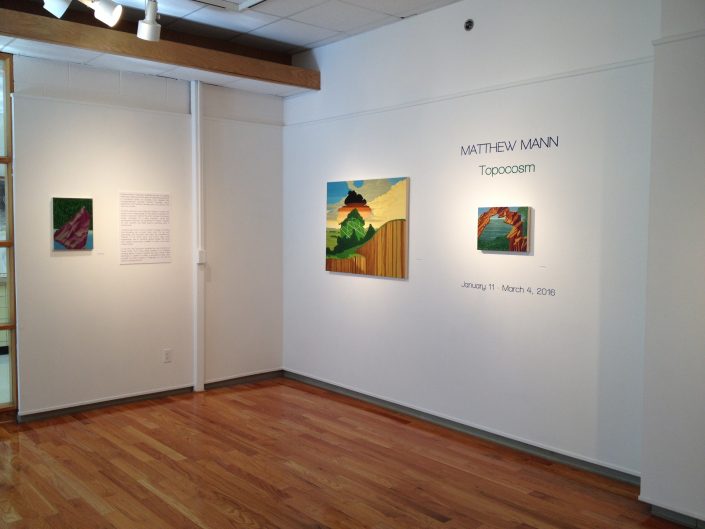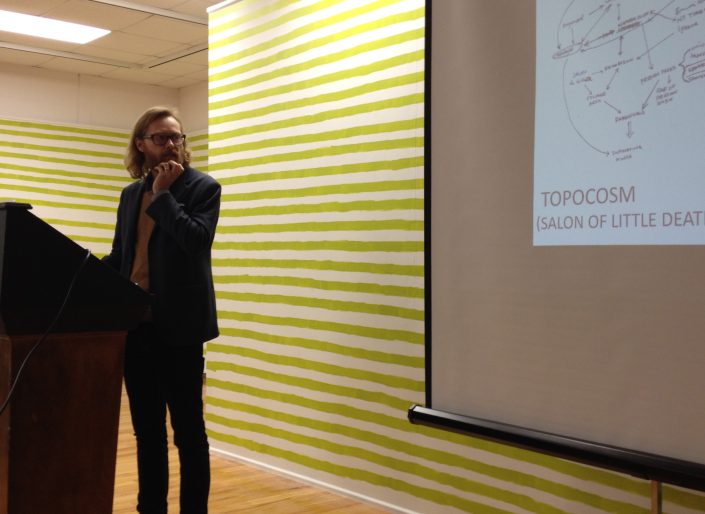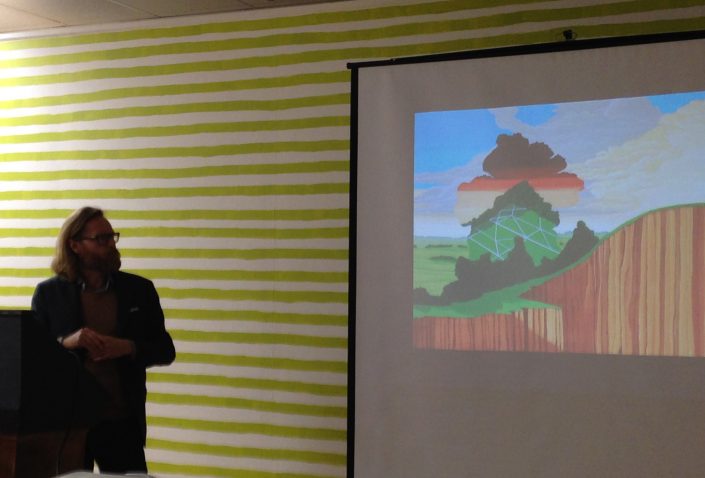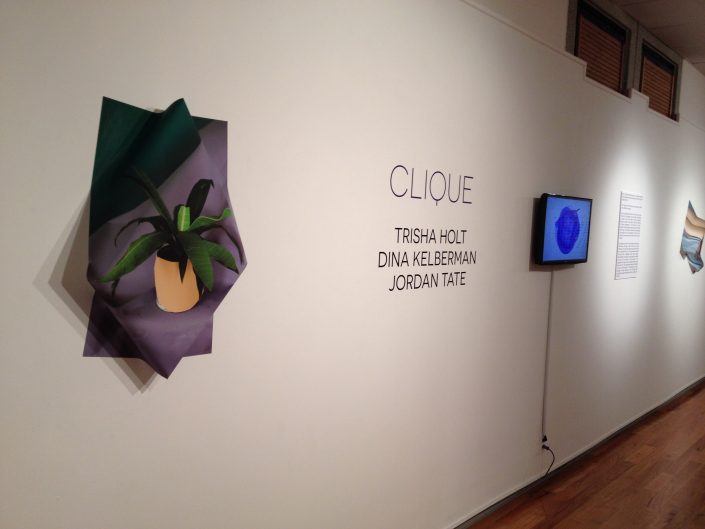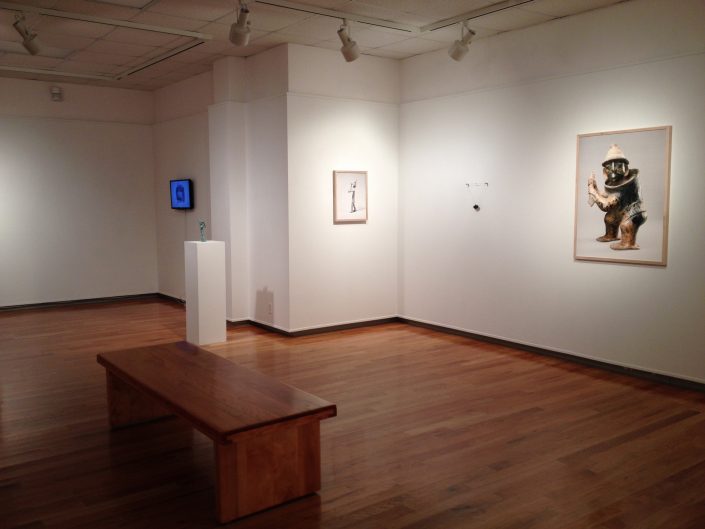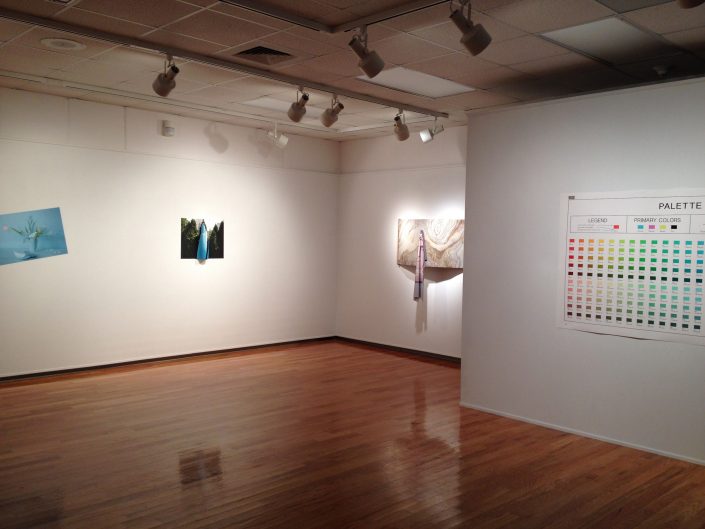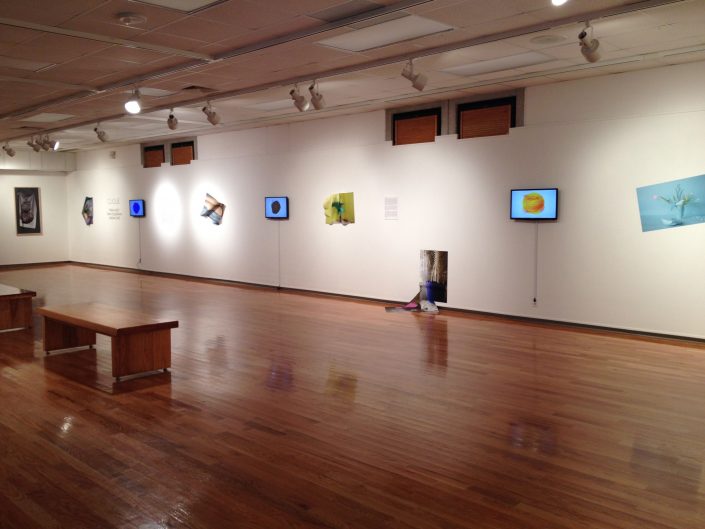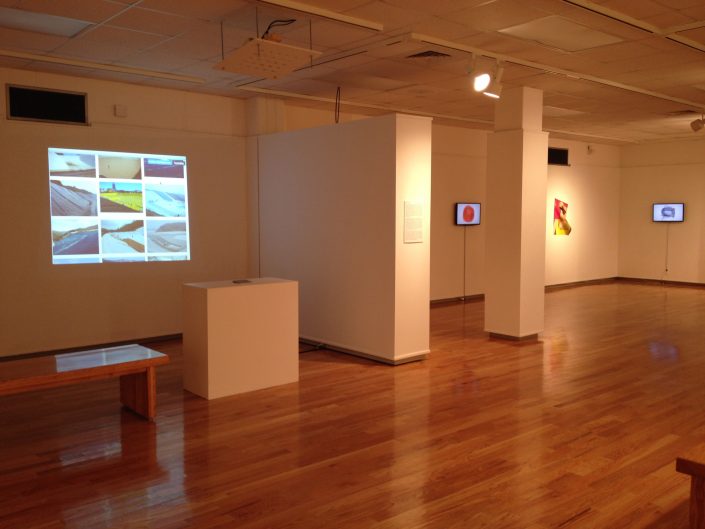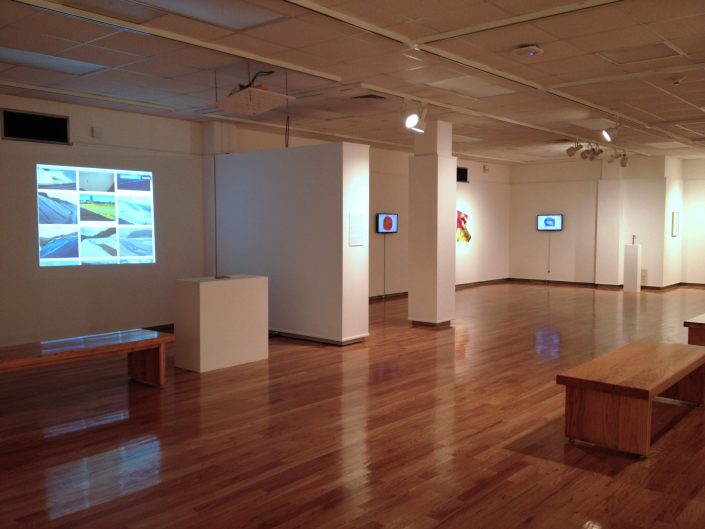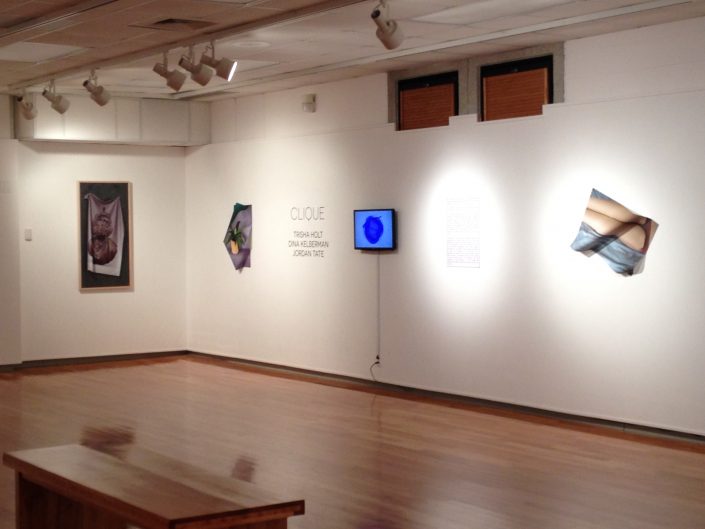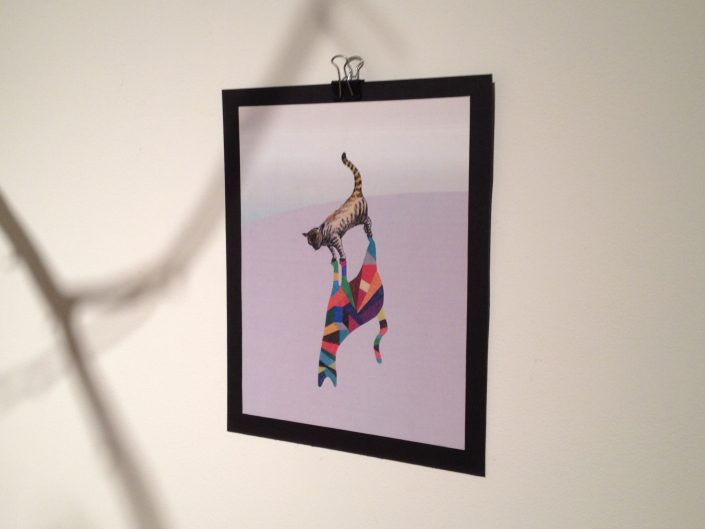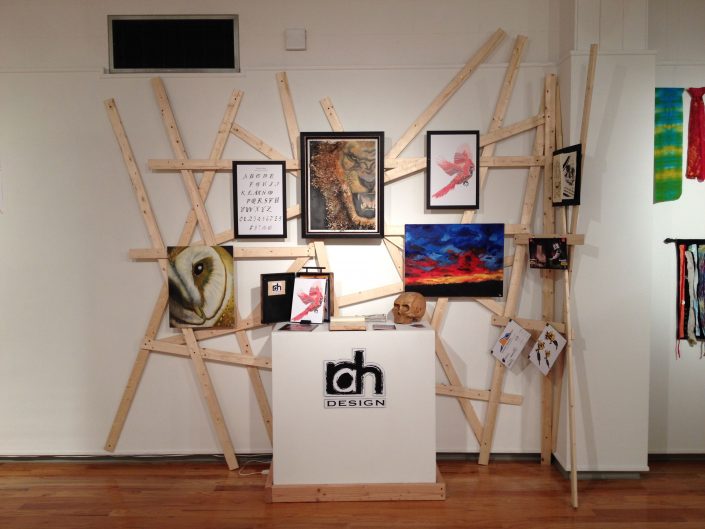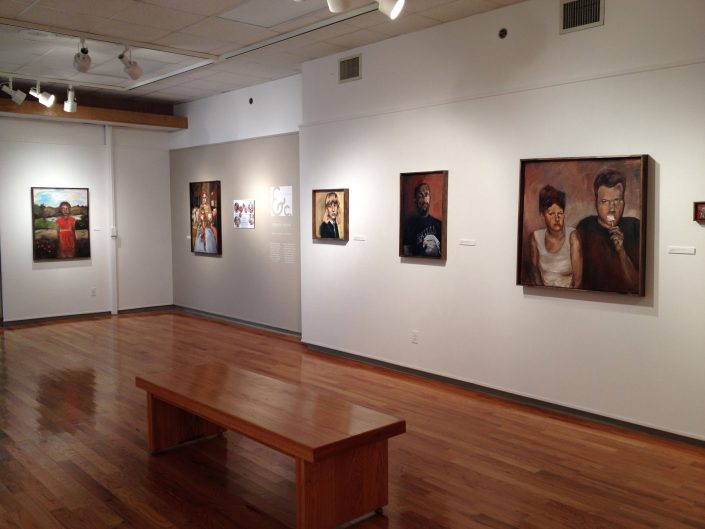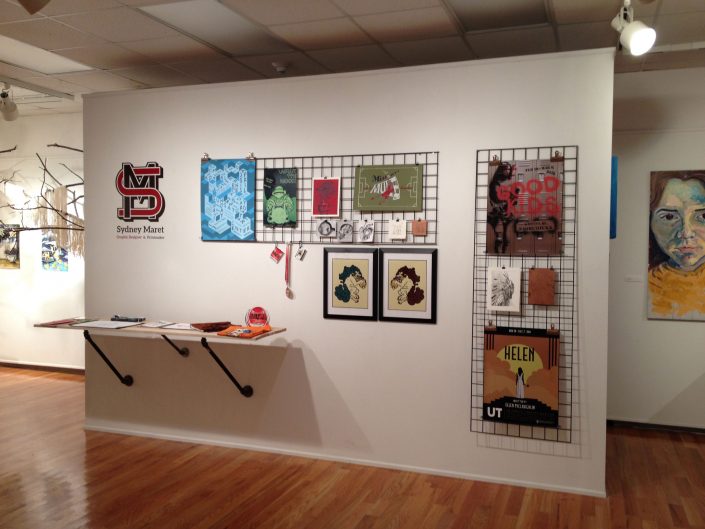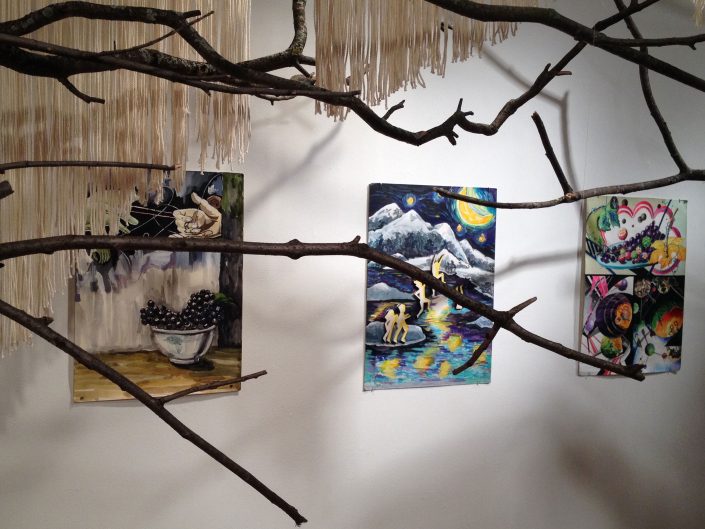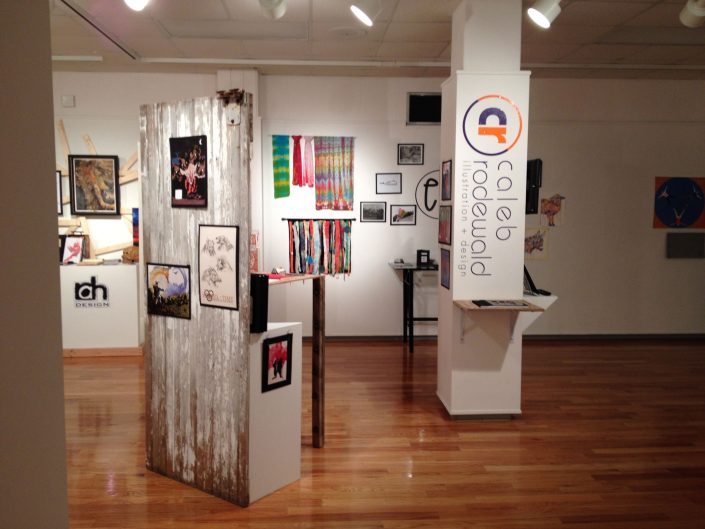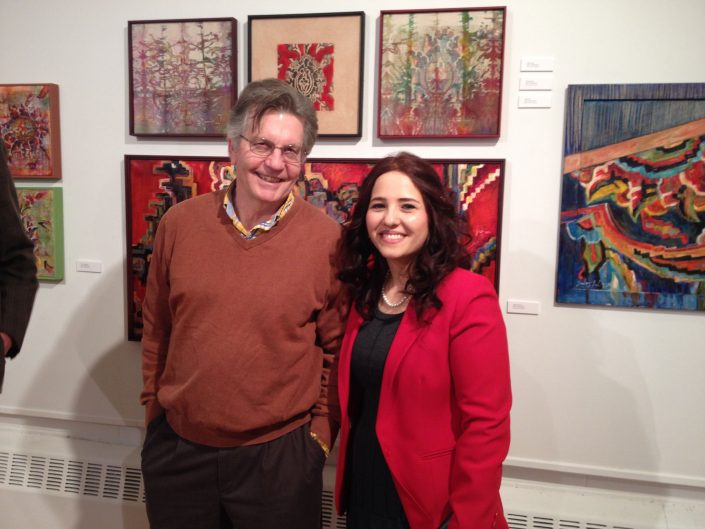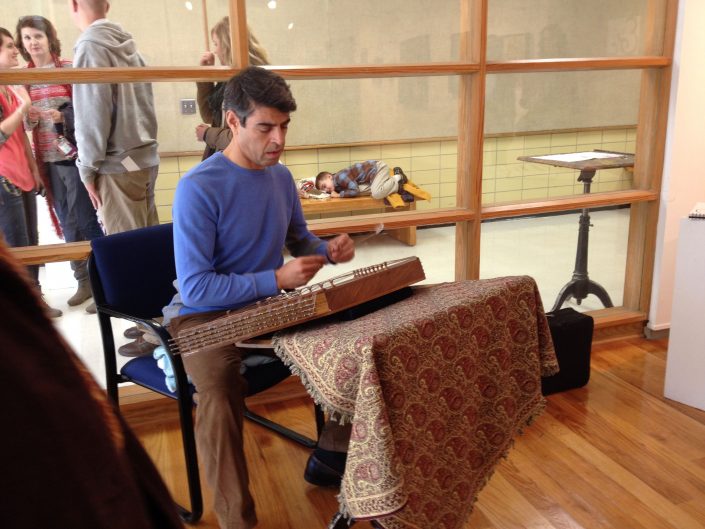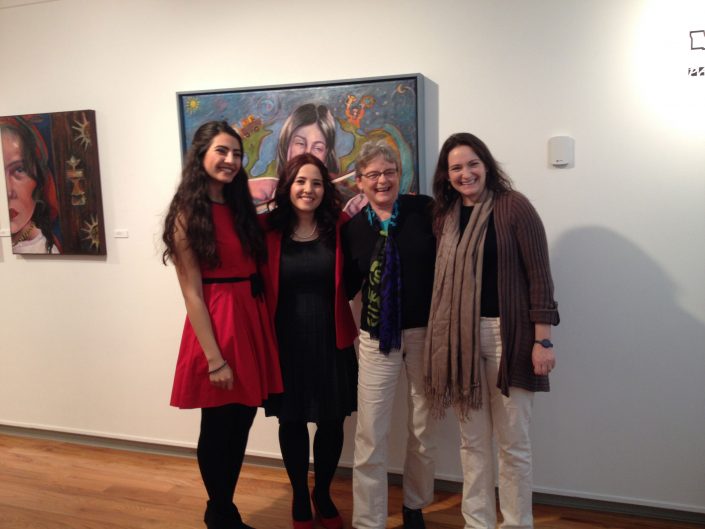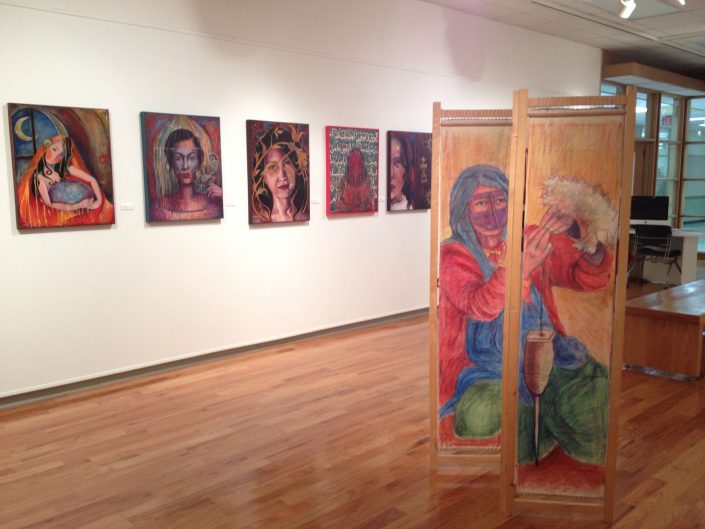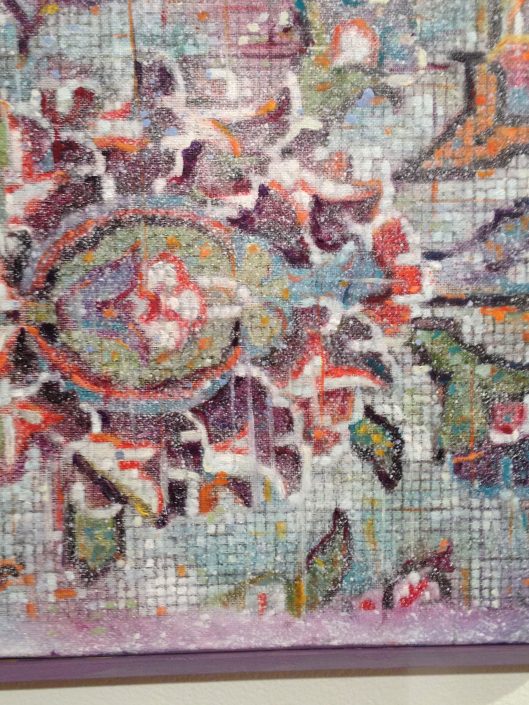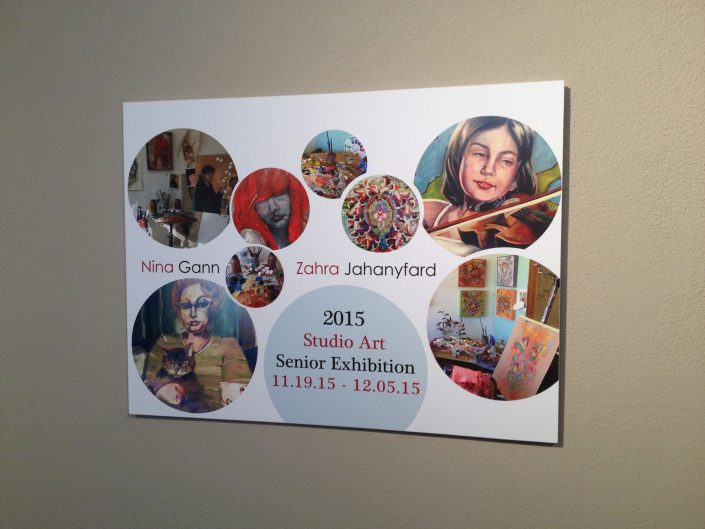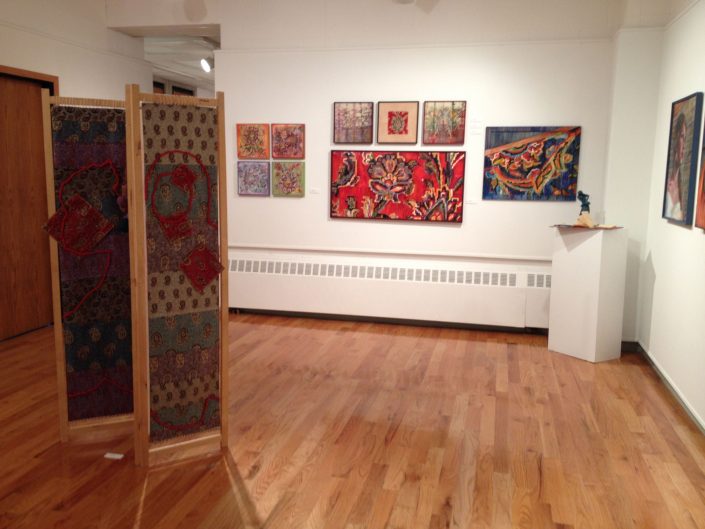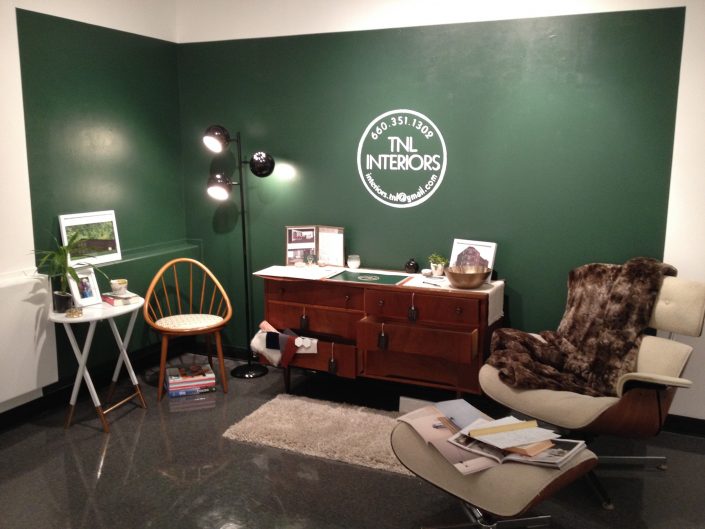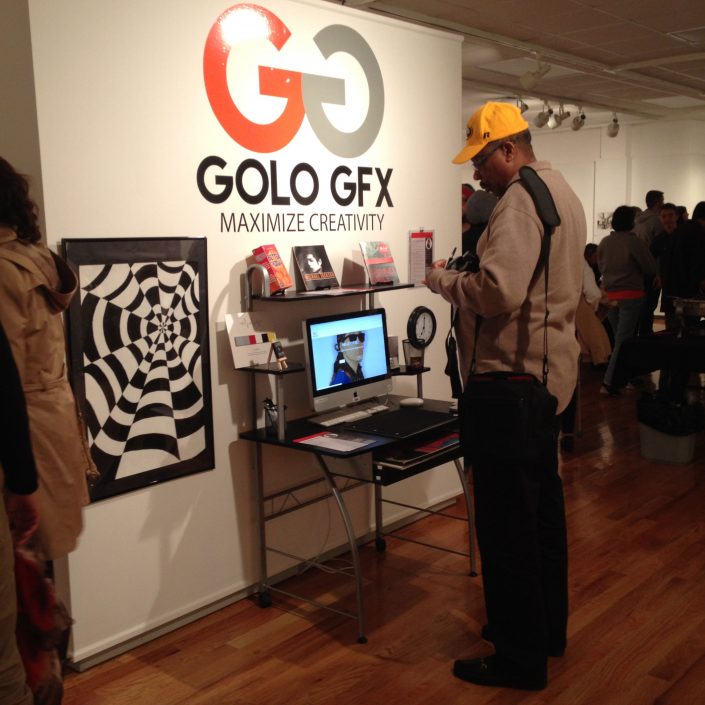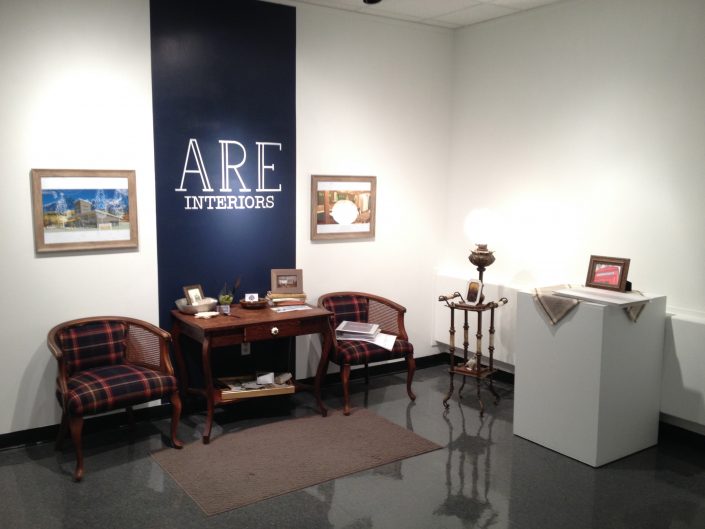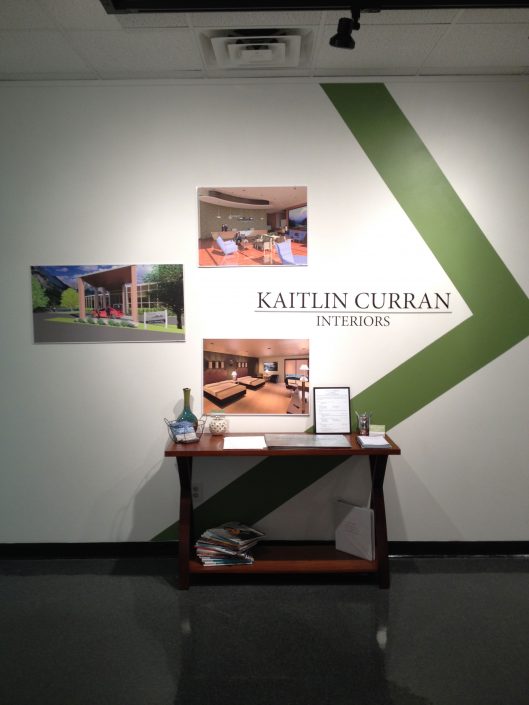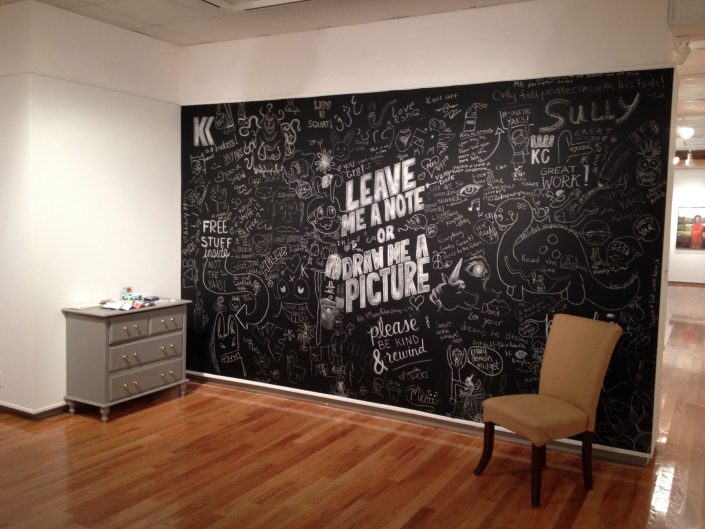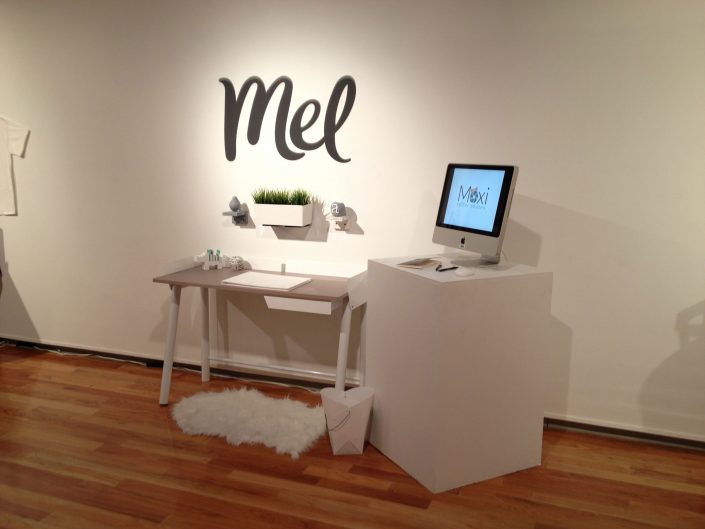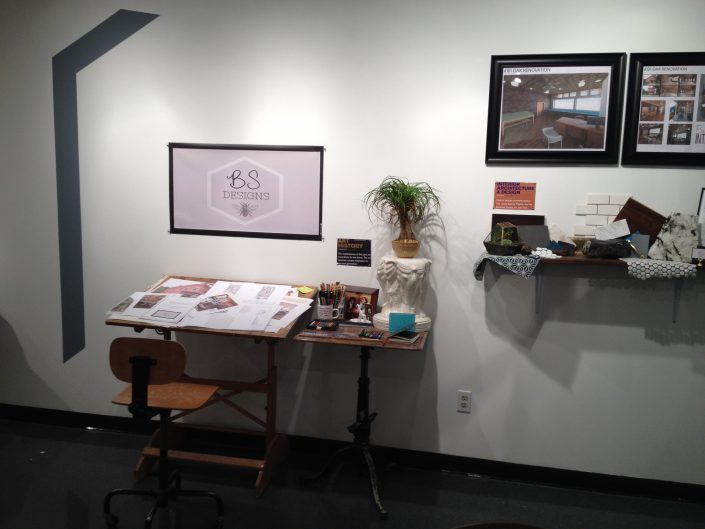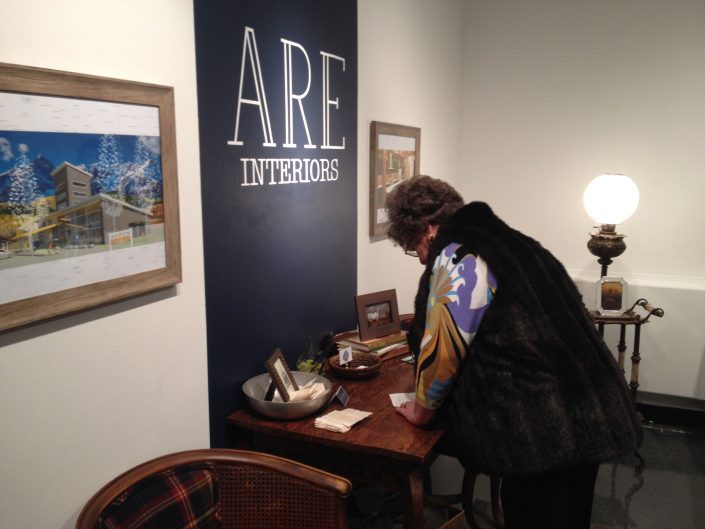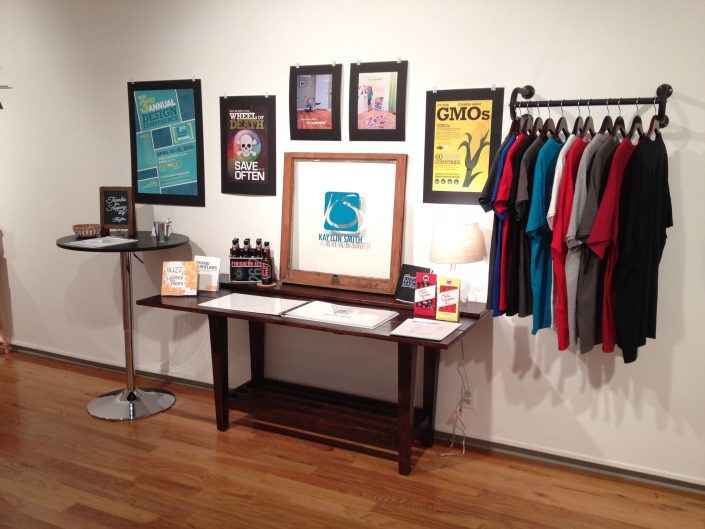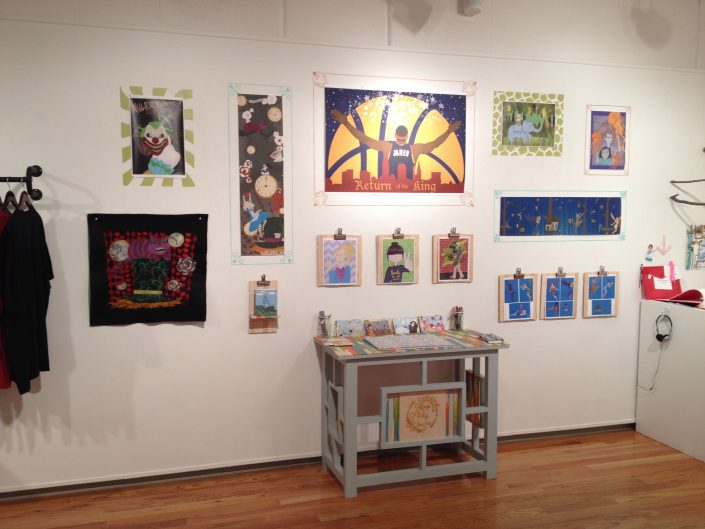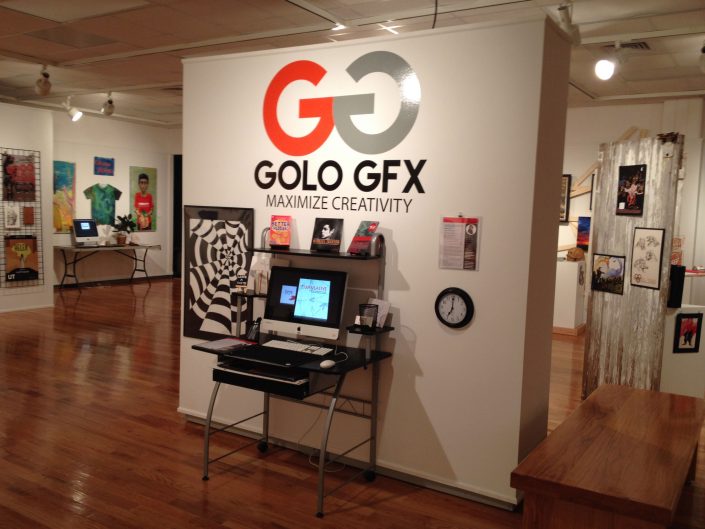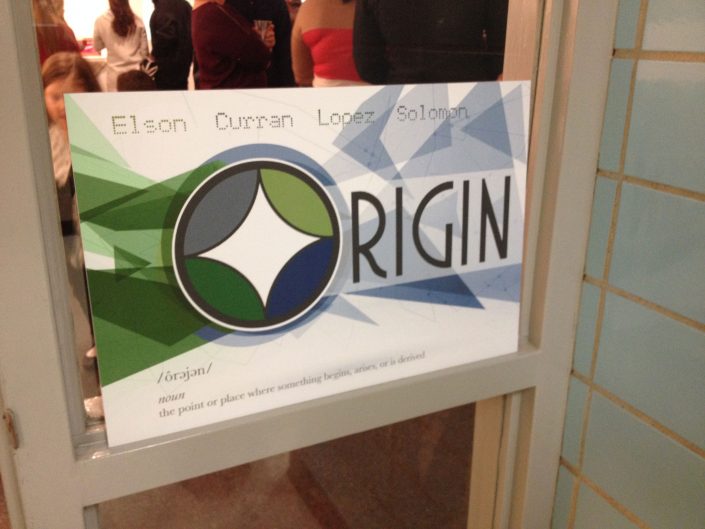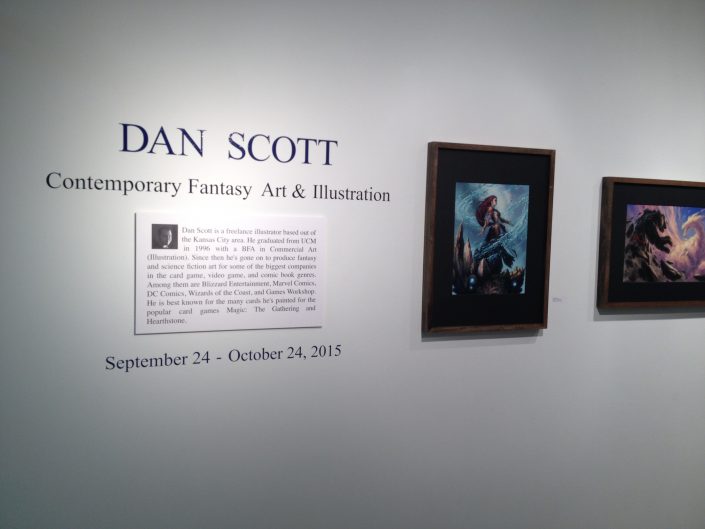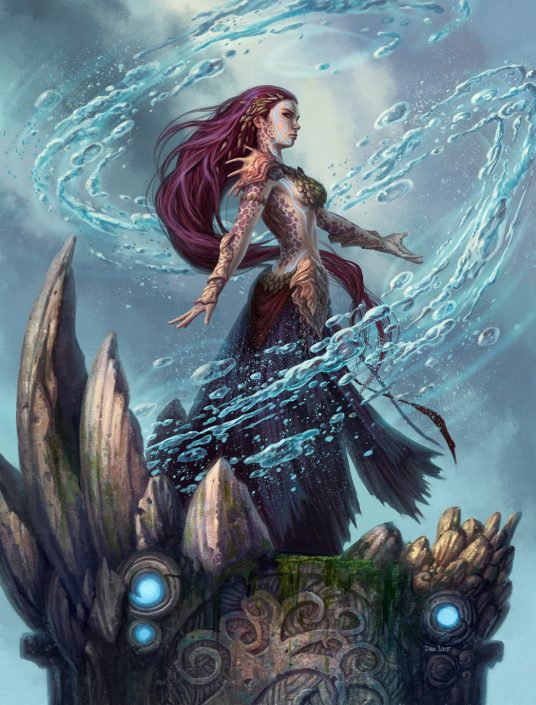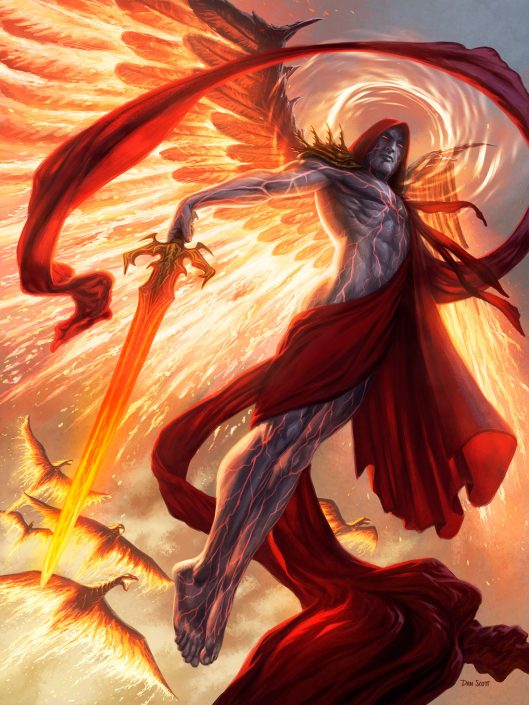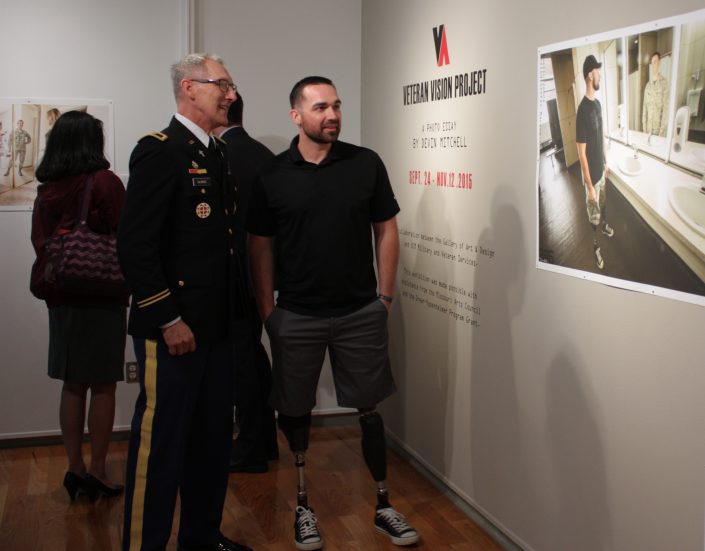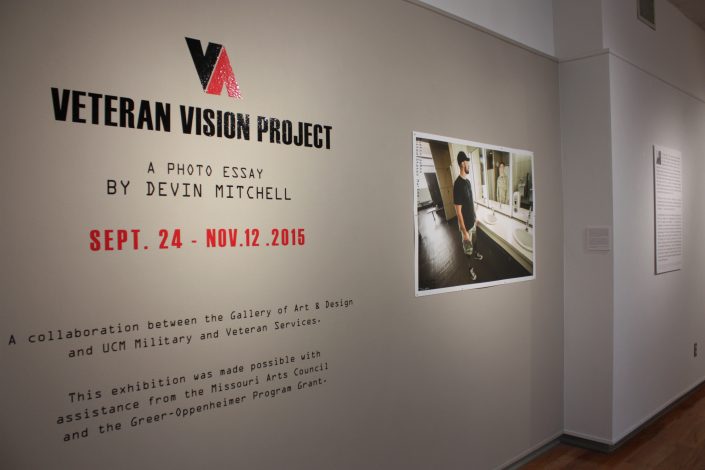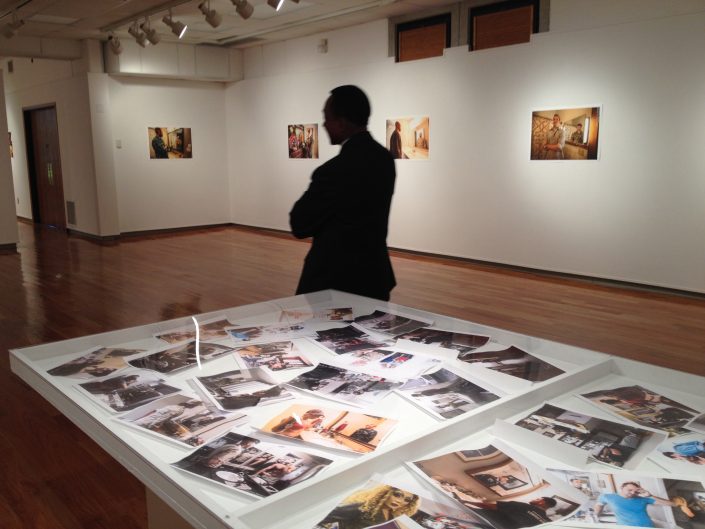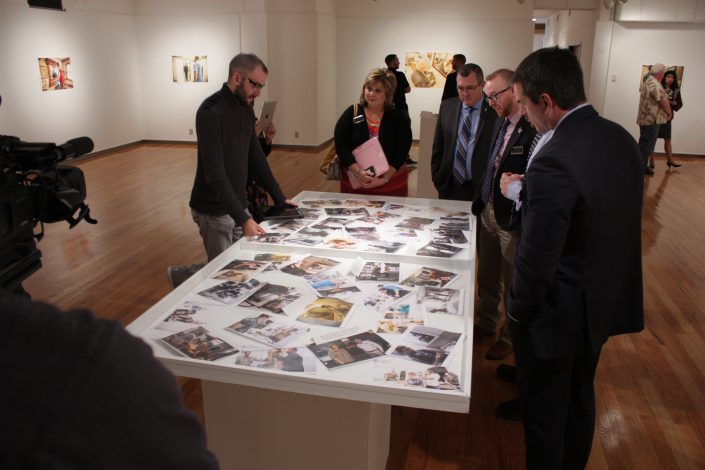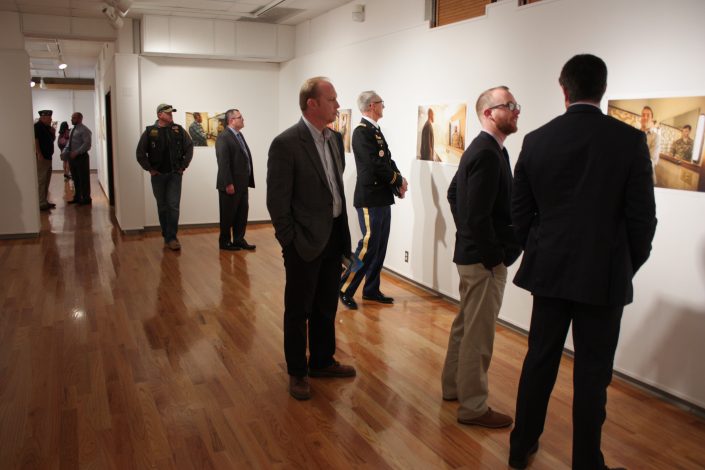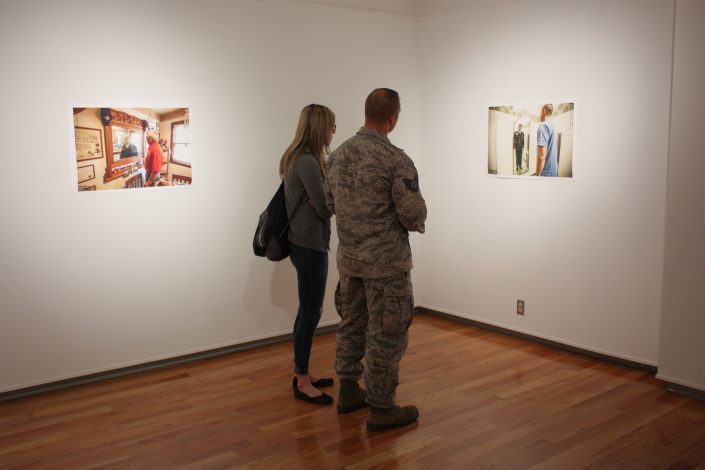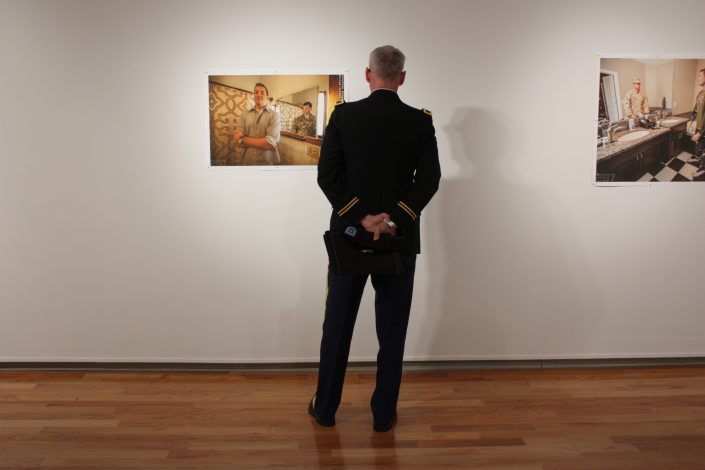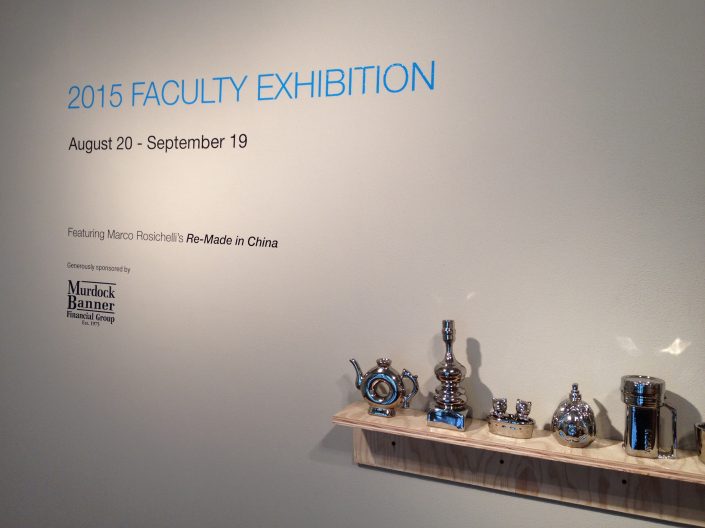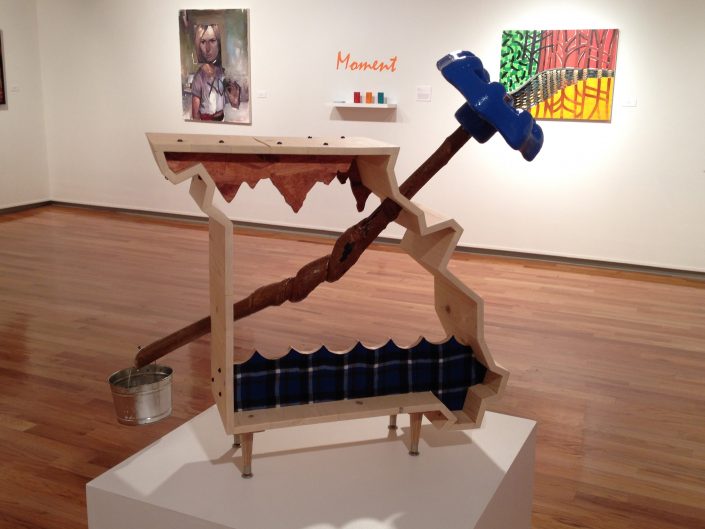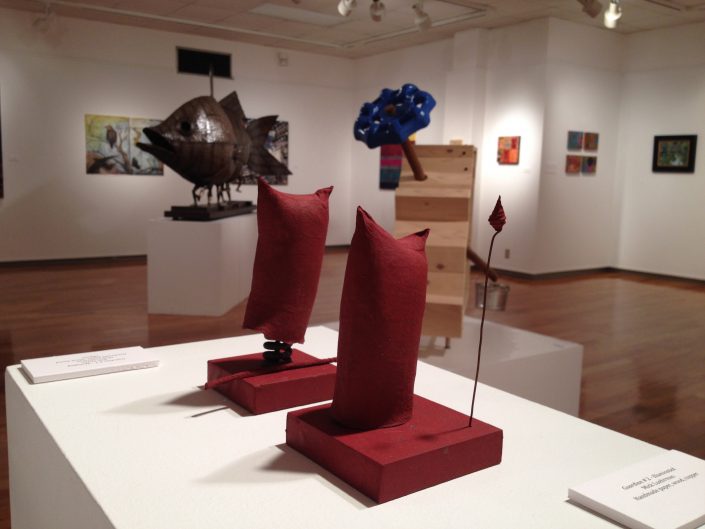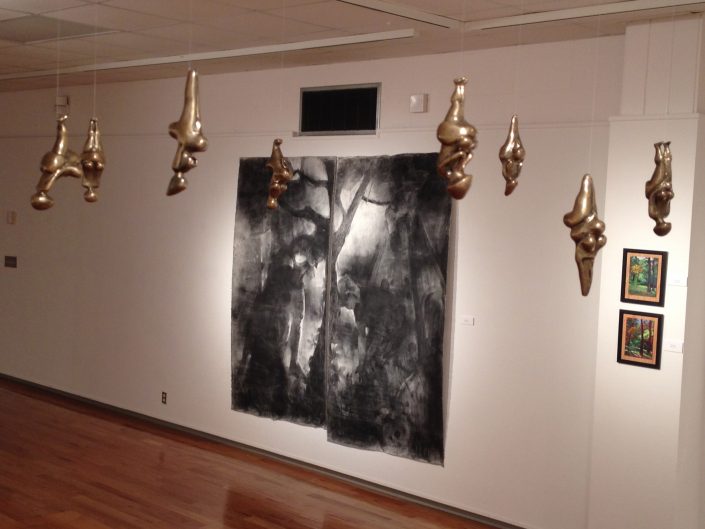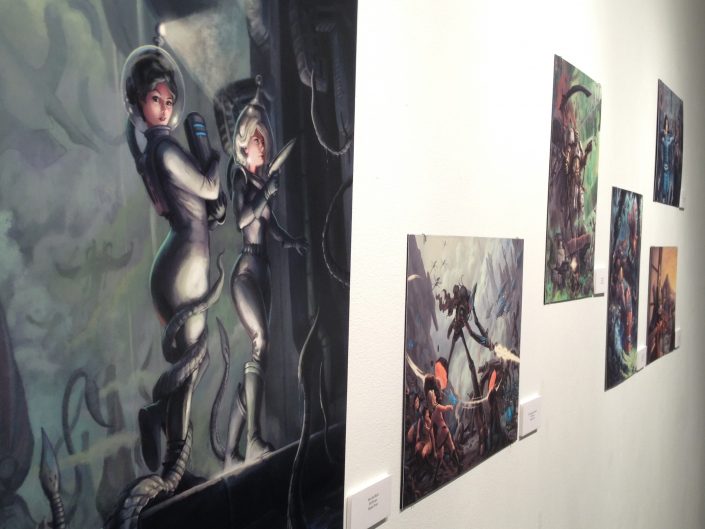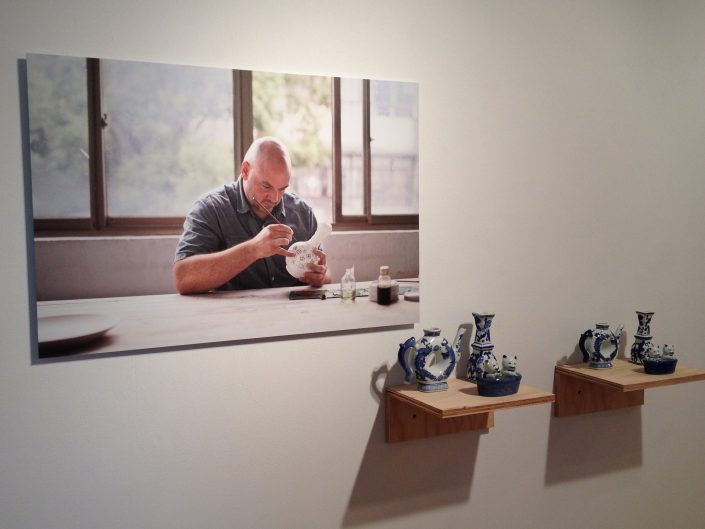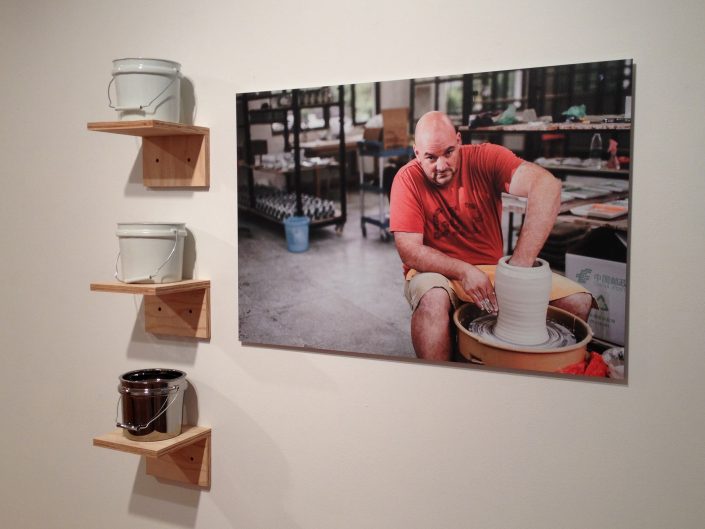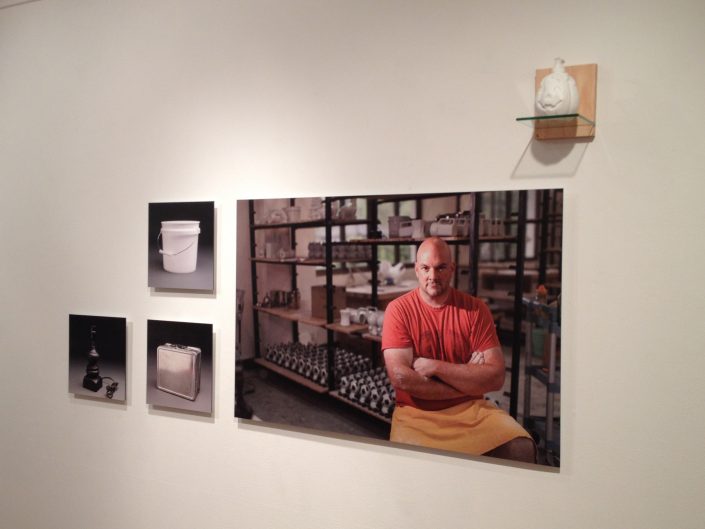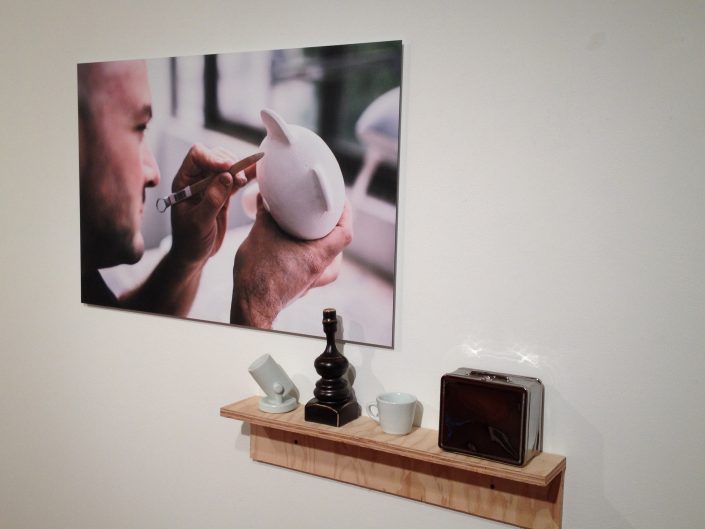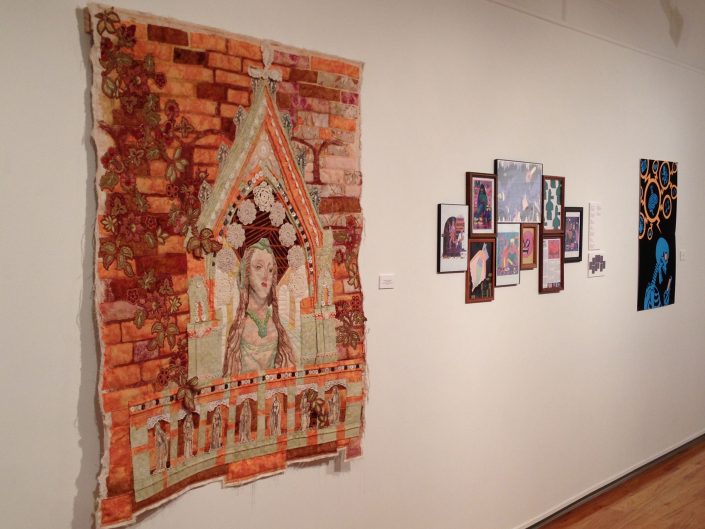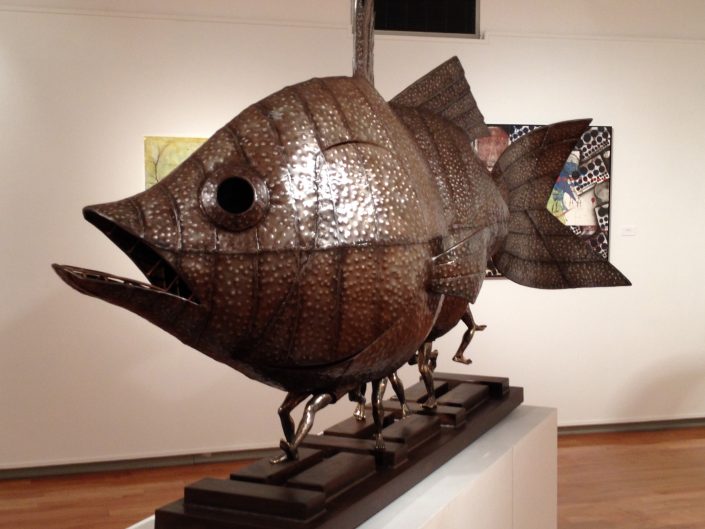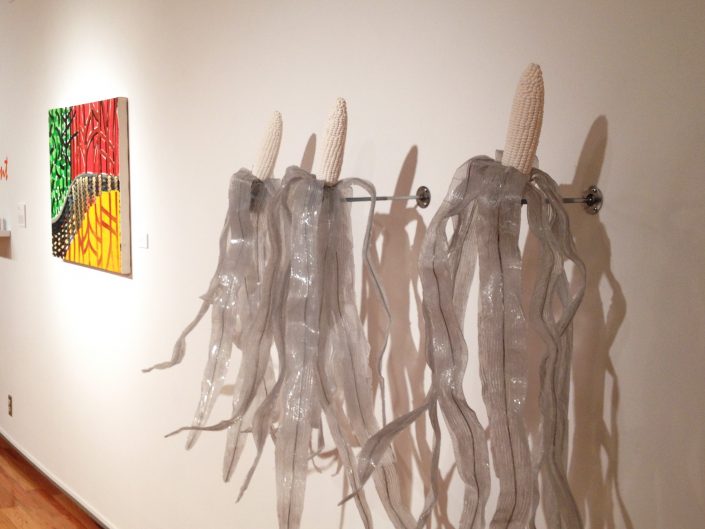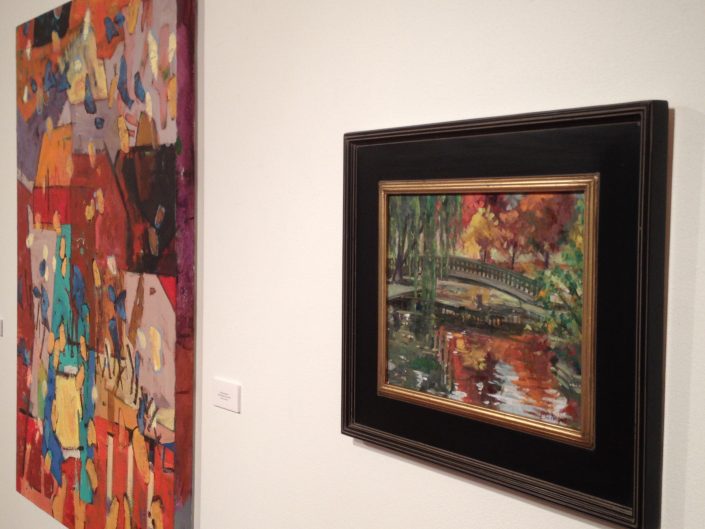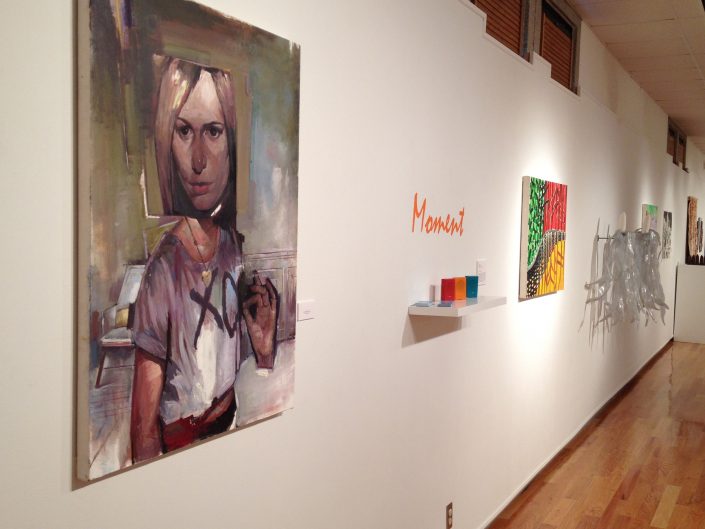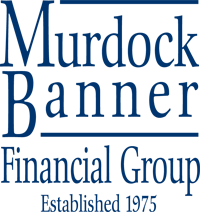Past Exhibitions
Exhibitions from the 2015–2016 calendar year
Through the process of building, moving, observing and rearranging, Cory Imig makes large-scale installations that explore three-dimensional space. In these installations, she responds specifically to each site allowing materials to change and dictate relationships between one another and the space itself. Intentionally, this blurs boundaries between individual pieces and brings the viewer in as a moving component of the work. Everything is active, including the space and its inhabitants.
Imig’s materials are familiar to everyday life. Some objects are found in thrift stores, dumpsters, basements or big box store clearance bins. They are ready for discard.
These sculptures are meant to question the idea of permanence and phenomenological experience.
Weaver is intrigued by the variations of translucency in the natural materials she uses and the way light plays through them. Her objects are constructed from a variety of materials, including gut, seedpods and grasses, thread, and steel. Weaver uses both traditional and unconventional techniques in her work but is inspired by ancient techniques used by Pacific Arctic peoples, who made waterproof rain parkas from the intestinal casings of sea mammals. The main bodies of her pieces are created by applying several layers of hog casing over a form. When completely dry this shell is removed from the form and given a coating of resin and wax. The shapes she selects purposefully suggest classical antique vessels, but, because they are not made of clay or glass, they transcend function and enter the realm of pure form and beauty.
Matthew Mann returns to his alma mater for a one-man show in the UCM Gallery of Art & Design. Mann’s exhibition will feature 14 recently created oil on canvas paintings.
These Topocosm paintings are from an ongoing series that makes use of the genre of landscape painting as a conceptual space for puzzling over vagaries and correspondences between pictorial language, visual experience, and narrative meaning which are central to my work as a whole.
The term topocosm was coined by Theodor H. Gaster and serves as an undercarriage for this series of paintings. For Gaster a topocosm reflects “the entire complex of any given locality conceived as a living organism”. Along with topographical features, the landscape for Gaster included the use, weather, and belief systems operating within a whole terrain.
Artists
/klik/: the sharp mechanical sound of a traditional camera shutter getting released, allowing light through the lens and exposing the film.
\klik\: a select (or even exclusive) group of people who share views, interests or purposes.
Guest curators Marco Rosichelli and Ryan Peter Miller present a select group of photographers known for their contemporary assertion of the pictorial medium into performance, sculpture, and interactive displays. Clique, phonetically referencing the sharp mechanical sound of the camera shutter, is an innovative subgroup of artists expanding the photographic medium into the 21st century.
UCM Seniors
Studio Art and Art Education students in the Department of Art and Design scheduled to receive degrees in December will present their work in the Main and Outer galleries. Exhibits will feature the best work from their college careers, along with projects developed in collaboration with faculty advisors.
UCM Seniors
Illustration, Graphic Design and Interior Design students in the Department of Art and Design scheduled to receive degrees in December will present their work in the Main and Outer galleries. Exhibits will feature the best work from their college careers, along with projects developed in collaboration with faculty advisors.
Dan Scott is a freelance illustrator based out of the Kansas City area. He graduated from UCM in 1996 with a BFA in Commercial Art (Illustration). Since then he’s gone on to produce fantasy and science fiction art for some of the biggest companies in the card game, video game, and comic book genres.
The Veteran Vision Project by Los Angeles photographer Devin Mitchell captures unique, double-sided visual stories of men and women who have served in the military.
Mitchell brings his work to the University of Central Missouri for public exhibition early this fall while also dedicating his time to photograph veterans and active duty service members from UCM and surrounding communities.
Mitchell’s technique enables people viewing his images to look beyond the military uniform to see the “human” side of people who serve in military roles. In one of his works, for example, he took a portrait of a former Marine in uniform, and a second photo of the same soldier as he appears in civilian life, now with prosthetic limbs. Then, using a photo editing system, he fused the two portraits into a mirror image showing the two intently staring back at each other.
The end result is a powerful reflection of the double identity this veteran is facing after a tour of duty in Afghanistan, and the struggle he now faces as a civilian to overcome the scars of war.
The Gallery of Art & Design opens it’s 2015 – 2016 exhibition season with two exhibitions focusing on the professional practice of faculty of the Department of Art & Design. The Annual Department of Art & Design Faculty Exhibition will be exhibited in the Main Gallery, while new work by Marco Rosichelli, Assistant Professor, Foundations Coordinator will open in the Outer Gallery.
In the Main Gallery, the Annual Faculty Exhibition features a wealth of artistic mediums from painting, to sculpture, to ceramic works. The exhibition allows Art & Design Faculty a platform to showcase their professional practices outside their university duties. Rosichelli’s art is conceptually driven, responding to site with playful results employing a myriad of handmade, fabricated, and repurposed components. His work spans a range of modalities from social sculpture to institutional critique and the production of fine art objects. “Re-Made in China” stems from Rosichelli’s residency at the Pottery Workshop in Jingdezhen, China, the capital of porcelain production for nearly two millennia. He assembled about a dozen banal objects available at any big box retailer: a plastic bucket, metal lunchbox, flashlight, carved pumpkin soap dispenser, a tchochke of two kittens in a basket, etc. with the common denominator being that they were stamped or stickered “Made in China.” Upon making the long trek to Jingdezhen, Rosichelli transported these objects back to the source country in order to collaborate with ceramic artists on site who could re-make the very same objects in porcelain.


